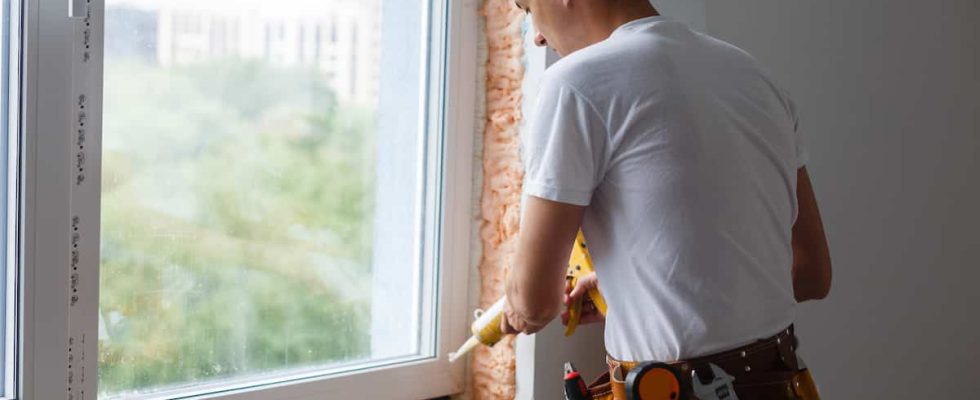The economic potential for reducing greenhouse gases in the residential sector is enormous, according to a study* by the Trottier Energy Institute.
Various energy efficiency measures are suggested to reduce the energy consumption of the real estate portfolio, which would allow citizens to make significant savings on their electricity bill, while allowing Hydro-Québec to avoid the consumption of energy equivalent to that of the island of Montreal.
1. Replacing shower heads with less energy-consuming models
Photo Adobestock
In Quebec, the average duration of a shower is 8 minutes, according to Hydro-Québec, so it is easy to calculate the possible savings. The cost of this measure per household is approximately $30 per shower head. With an average of 2.25 people per dwelling, the annual saving per household would be 620 kilowatt hours and $50 less on the bill. Across Quebec, the measure costs more than 3.7 million knobs and $111 million. With a population of more than 8.3 million people, the province-wide energy savings would be approximately 2 terawatt hours. It would generate a substantial saving in drinking water of the order of 50 to 70 Olympic swimming pools annually. In addition to the water heating energy saved by households, municipalities would save on water pumping and treatment.
Return on investment: 4 months
2. Improving sealing by caulking windows

Photo Adobestock
This measure includes caulking, installation of weatherstripping and repair of doors and windows. The objective is to reduce infiltration. Hydro-Québec estimates a possible reduction of 11.5%. The measure would cost around $150.
Return on investment: 6 months to 4 years
3. Adding plastic wrap to existing windows

Photo Adobestock
Instead of replacing existing windows at a high cost, it is possible to improve the energy performance of existing windows at a more acceptable cost. There are metallic coating films on the market which are applied to windows and which reduce the transmission of heat by radiation to the outside of the room during cold periods.
Return on investment: 3 years
4. Installation of heat recovery and gray water system (water from sink taps and shower)

Photo Paola Duchaine for Écohabitation
A gray water heat recovery system, often called Powerpipe, recovers approximately 40% of the heat from the drain water when taking a shower (from 30% to more than 70% depending on the brand and model) .
Return on investment: 11 years
5. Installation of high efficiency, low temperature heat pump

Photo Adobestock
Recent heat pumps can efficiently produce heat down to temperatures below –25°C, with great efficiency. Even if the harshness of the Quebec climate does not allow most homes to be heated solely with a heat pump, its use will nevertheless allow a significant reduction in annual heating energy. Hydro-Québec offers subsidy programs for purchase and installation.
Return on investment: minimum 6 years
6. Roof insulation

Photo Adobestock
Roof insulation involves adding insulation in the attic. This work may require reinforcing the roof structure and installing a vapor barrier and an air barrier to prevent structural degradation due to interstitial condensation, which would be favored by the addition of insulation. This is a fairly complex measure that requires the intervention of a specialist. The cost of the measure would be approximately $16/m2 to seal and insulate, including materials and labor.
Return on investment: 1.5 to 15 years
7. Insulating foundation walls and floor joists

Photo Adobestock
Insulating foundation walls consists of adding rigid or semi-rigid insulation (rock wool panels) to the inside of the home. Exterior insulation would be preferable, but not always possible and certainly more expensive. In this case, it is necessary to excavate the perimeter of the foundations up to the sole, attach a drainage membrane and add rigid insulation.
Return on investment: minimum 5 years
8. Replacement of doors & windows

Photo adobestock
This measure is recommended in the particular case where existing doors and windows are reaching the end of their life and must be replaced. We must take advantage of this opportunity by replacing them with high-efficiency models, nominally certified products. Energy Star. The total cost of the measure includes the cost of the window, the cost of delivery and the installation costs which amounted to 30% of the cost of the window.
Return on investment: 20 years
9. Insulation of above-ground walls

Photo Adobestock
This measure is potentially one of the most expensive, although it provides considerable energy savings, especially for very old buildings. Insulating above-ground walls can be done from the inside or the outside.
Return on investment: 6 years
10. Replacing Oil Heating Systems

Photo Adobestock
